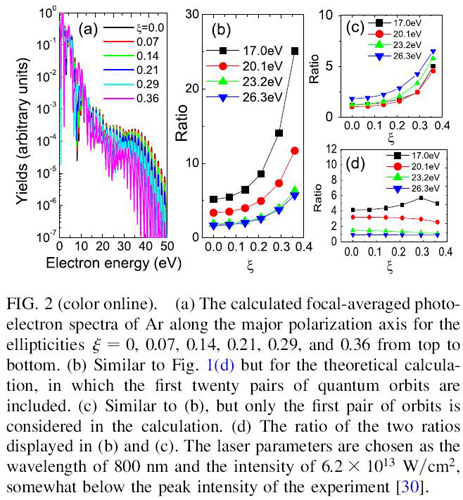Researchers at Wuhan Institute of Physics and Mathematics and Shanghai Institute of Optics and Fines Mechanics (SIOM/China) experimentally studied the ATI spectra of the noble gases Ar, Kr, and Xe along the major polarization axis in intense elliptically polarized laser pulses.[ Physical Review Letters ,110, 043002 (2013)]With continuously increasing ellipticity, They found that the electron yields in the low-energy part of the ATI plateau drop more slowly than those in the high-energy part. This is attributed to the ellipticity dependence of the first pair as opposed to that of the higher pairs of quantum orbits. Namely, the cutoffs of all pairs recede at about the same rate with increasing ellipticity. However, the magnitude of the contribution of the first pair drops much faster than those of the longer orbits. Therefore, with increasing ellipticity the contribution of the first pair decreases. Because, however, the first pair has the highest cutoff, it remains dominant in the upper part of the plateau but with a much reduced yield. Comparing theory and data they concluded that qualitative agreement can only be obtained by including the contributions of the longer orbits.Moreover, our analysis reveals that with increasing laser ellipticity the contribution of the longer orbits becomes more and more important.
